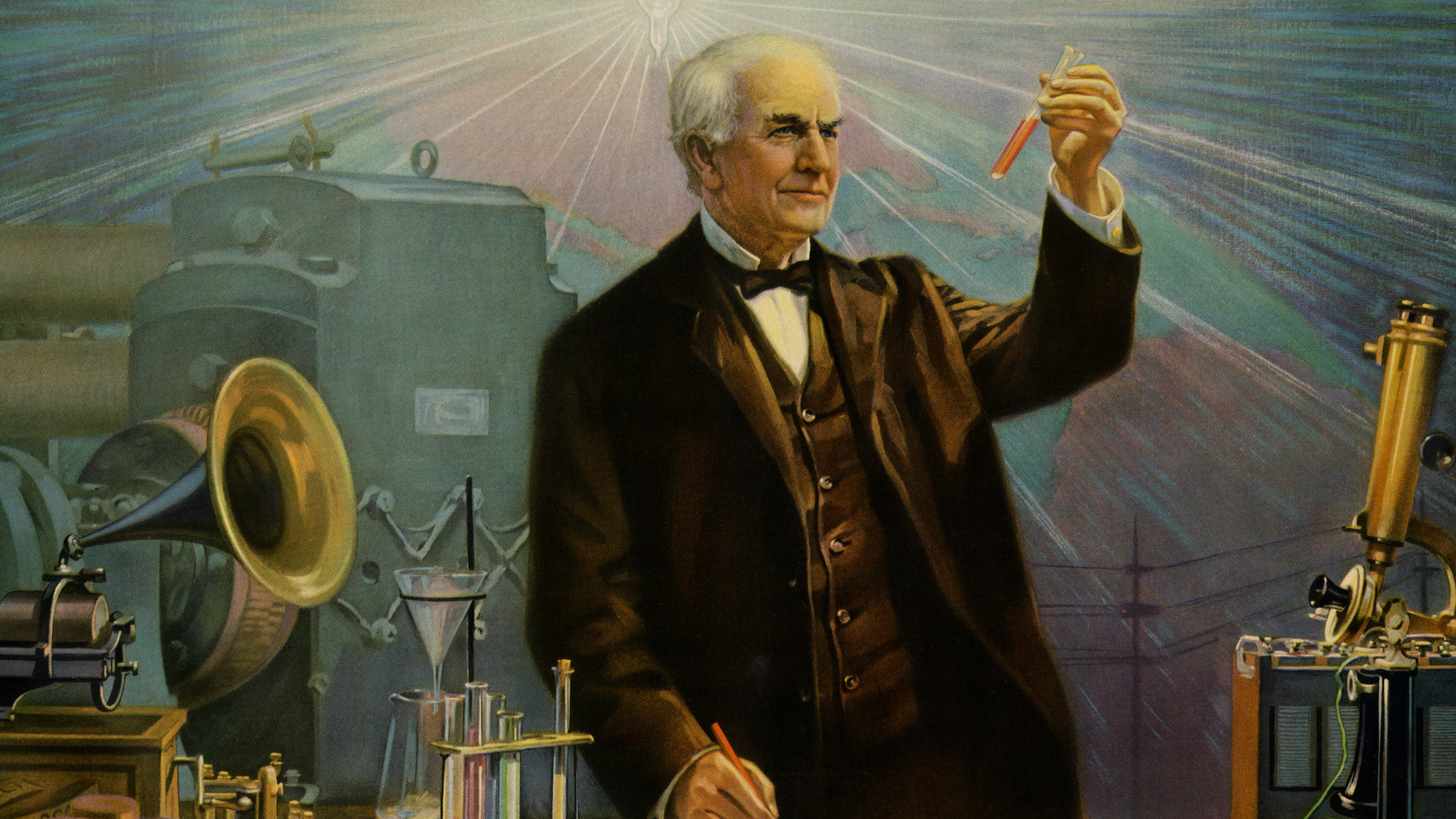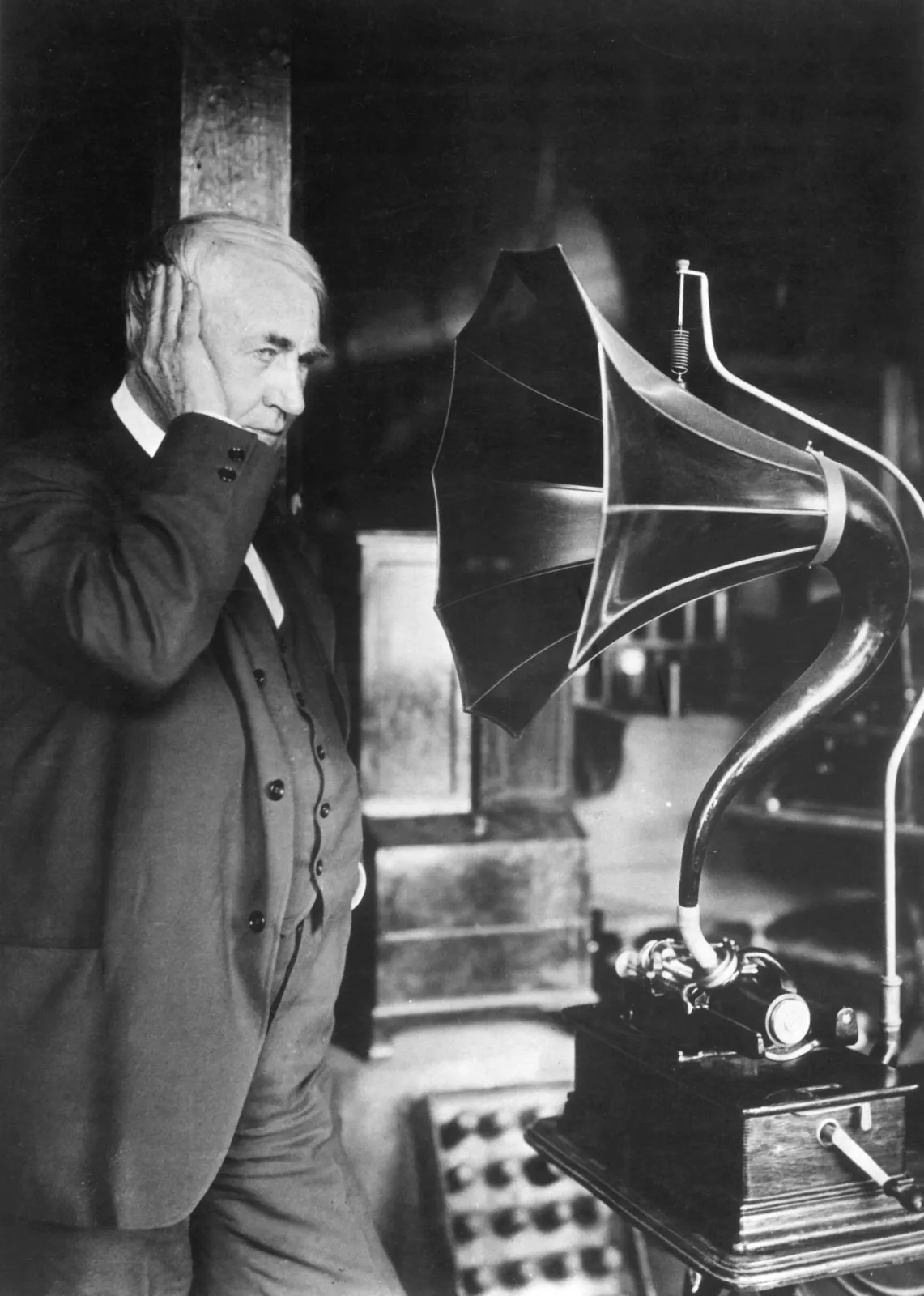Thomas Edison

Edison proved that you don’t have to wait for a brilliant idea to strike—you can build brilliance brick by brick, filament by filament.
Biography
Thomas Alva Edison was born on February 11, 1847, in Milan, Ohio, the youngest of seven children. When he was seven, his family moved to Port Huron, Michigan, where his lifelong curiosity really began to shine. Edison didn’t go to school for long—only a few months—because his teachers thought he was a poor student. But his mother believed in him and taught him at home. She encouraged him to read and explore. Edison devoured books on science and experimented in the basement, turning it into his first mini laboratory.
By age 12, Edison had started his first business—selling newspapers, snacks, and candy on trains. He even printed his own small newspaper right there on the train! When he wasn’t working, he was tinkering with chemicals and wires. One day, he accidentally started a fire in the baggage car during an experiment, but that didn’t stop him. Around this time, he also began to lose much of his hearing, which he later said helped him focus better on his work.
As a teenager, Edison learned to operate the telegraph, an early machine that sent messages through electrical signals. By 16, he was a full-time telegraph operator, traveling across the country and fixing machines when they broke. But Edison didn’t just repair things—he imagined ways to make them better. That mindset led him to his first invention: an electric vote recorder for Congress. It didn’t sell, but it taught him an important lesson—to invent things people actually need.
Edison’s big break came in 1869 when he invented the Universal Stock Printer, which helped stockbrokers get up-to-date prices faster. He earned $40,000 from the invention—a fortune for a young man—and used the money to open his first laboratory in Newark, New Jersey. He worked nonstop, improving the telegraph and hiring a small team of assistants. In 1876, he built a bigger and more famous lab in Menlo Park, New Jersey. It became the world’s first true research and development center, a place where invention was an everyday job.
In Menlo Park, Edison changed the world. In 1877, he created the phonograph—the first machine that could record and play back sound. Imagine hearing your own voice for the first time in history! Two years later, after hundreds of experiments, he invented a practical incandescent light bulb. But Edison didn’t stop there—he built an entire system for generating and delivering electricity, allowing homes and cities to be safely lit by electric power. When his Pearl Street power station opened in 1882 in New York City, it marked the beginning of the electric age.
Edison’s inventions reached far beyond light and sound. He helped create motion pictures, designing the first movie camera and film studio—the famous ‘Black Maria.’ He experimented with mining, built factories, and even created the first alkaline storage battery, which powered ships, trains, and lamps. Not every idea worked—his iron mining project was a costly failure—but he never saw failure as final. He once said, ‘I have not failed. I’ve just found 10,000 ways that won’t work.’
Edison’s personal life had its ups and downs. His first wife, Mary, died young, leaving him with three children. Later, he re-married and moved to West Orange, New Jersey, where he built an even larger laboratory complex. There, he continued inventing for decades, working on phonographs, better batteries, and even new ways to make rubber for car tires. His lab grew into a 20-acre industrial village with thousands of workers. Edison became a symbol of American creativity—proof that persistence and curiosity could change the world.
By the time he died on October 18, 1931, Edison held over 1,000 patents. Cities around the country dimmed their lights in his honor. The boy who once got kicked out of school for asking too many questions became one of history’s greatest inventors. His work gave us sound recording, electric light, motion pictures, and so much more. But maybe his greatest invention wasn’t a machine at all—it was the belief that imagination, hard work, and a curious mind can light up the world.
Thomas Edison showed that invention isn’t magic, it’s curiosity, hard work, and never giving up. He turned imagination into something you could actually build, test, and share with the world. His way of working—experiment, learn, improve—became the model for how modern inventors, scientists, and engineers solve problems today. From light bulbs to laptops, Edison's legacy reminds us that creativity grows brighter every time someone dares to ask, 'What if?'
?
How did Edison's approach to invention differ from modern innovation methods?
Why was Edison’s Menlo Park lab considered revolutionary?
What was the impact of the phonograph on society at the time?
How did Edison’s rivalry with Tesla shape the future of electricity?
What does Edison's failure in iron mining teach us about risk in innovation?
Why is Edison's process for invention as important as his inventions themselves?
How did Edison’s work contribute to the birth of the film industry?
Dig Deeper
Learn how Thomas Edison changed the world with his inventions and pioneered the research lab model still used in modern innovation.
Discover more

Tim Berners-Lee
Inventor of the World Wide Web, Tim Berners-Lee showed us that one idea, shared freely, can change the lives of billions.

Leonardo da Vinci
Leonardo da Vinci reshaped art and inspired technological innovation for centuries.

Steve Jobs
Steve Jobs, the visionary co-founder of Apple Inc. who revolutionized personal computing, mobile communication, music, and digital design.
Further Reading
Stay curious!
